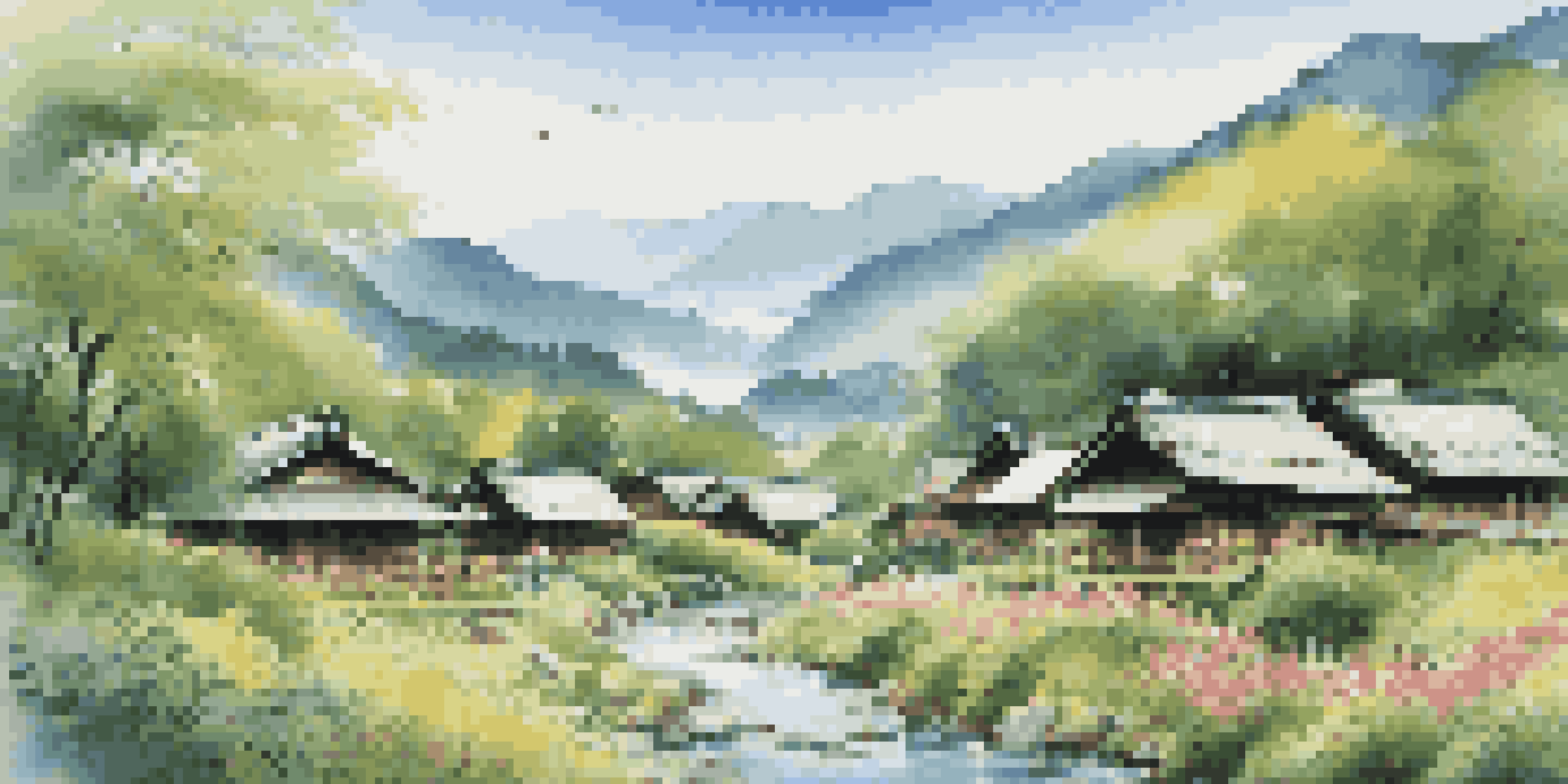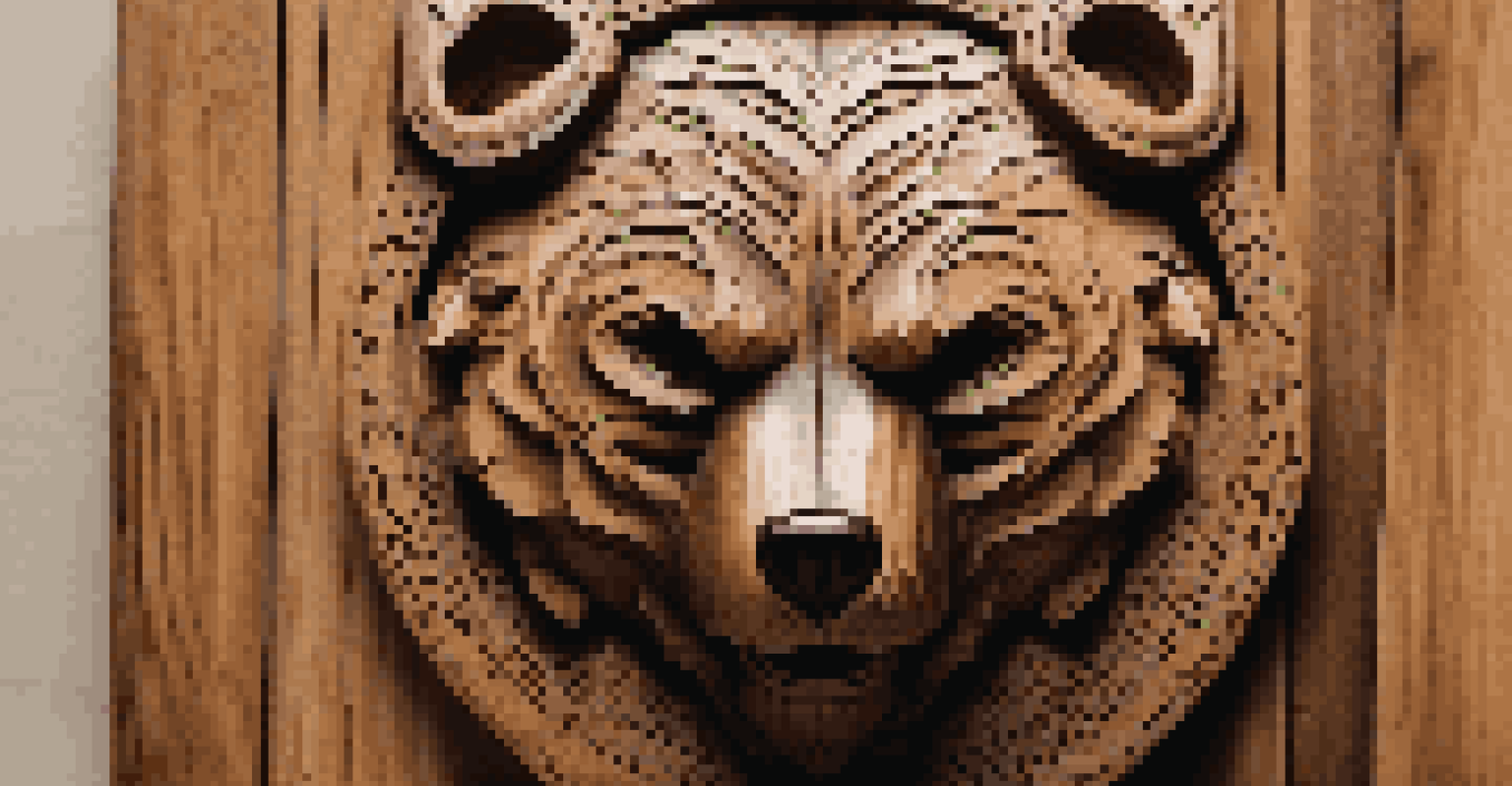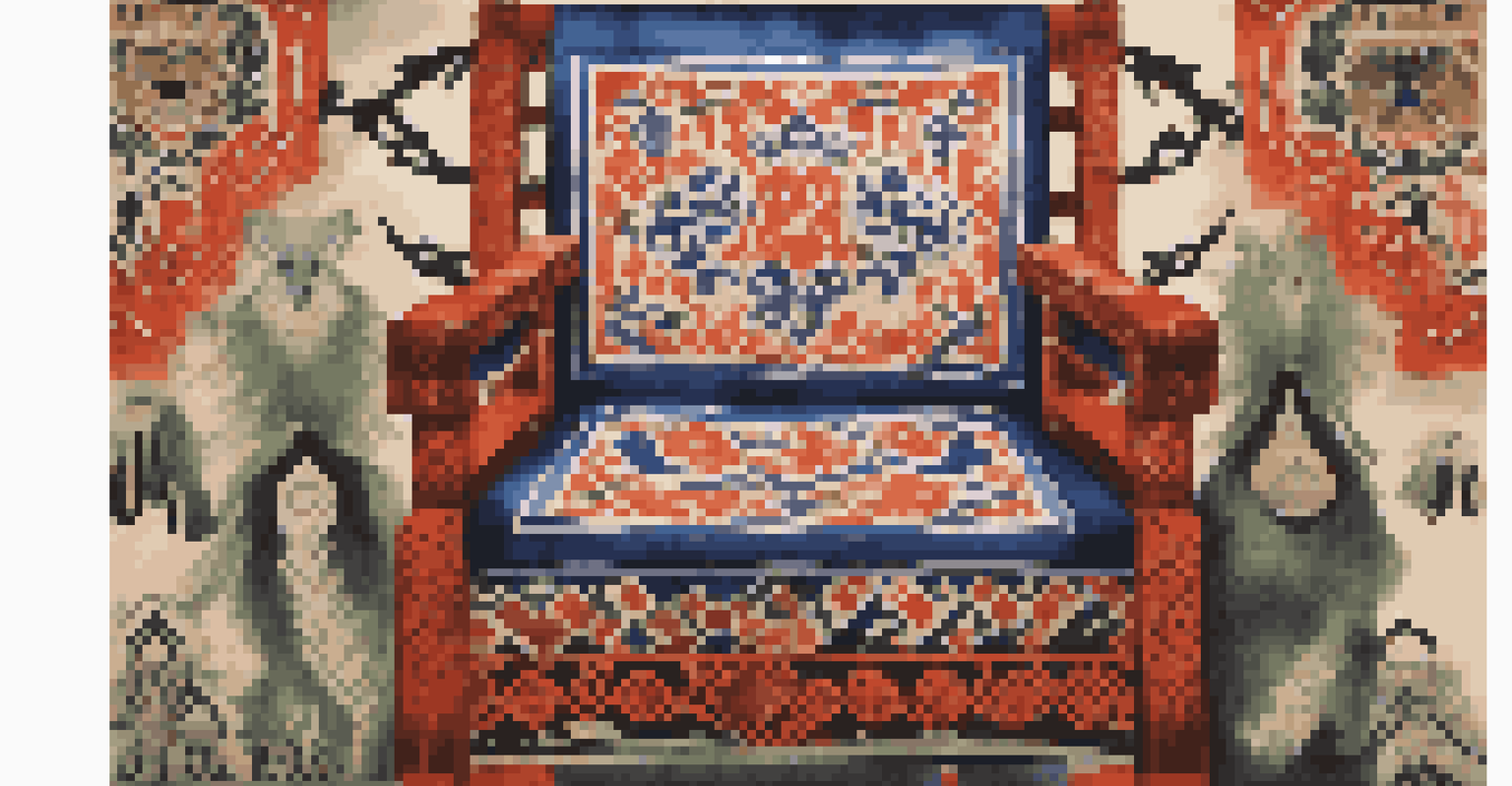The Significance of Art in the Rituals of the Ainu People

Understanding the Ainu People and Their Culture
The Ainu people, indigenous to Japan, possess a rich cultural heritage that is deeply intertwined with their environment and spirituality. Known for their unique language, traditions, and customs, the Ainu have historically lived in harmony with nature, which is reflected in their art forms. This connection to the land and nature is fundamental to understanding how art plays a vital role in their rituals.
Art is the most beautiful of all lies.
Ainu culture emphasizes the importance of animism, which is the belief that all natural elements possess a spirit. This belief system shapes their artistic expressions, as many artworks are created to honor these spirits. Through storytelling, music, and visual art, the Ainu convey their worldview, preserving their identity and beliefs for future generations.
The significance of art in Ainu culture goes beyond mere decoration; it serves as a medium for communication and connection with the spiritual world. By exploring the Ainu's rich traditions, we can appreciate how their art encapsulates their history, values, and identity.
The Role of Art in Ainu Rituals
Art is central to Ainu rituals, functioning as a vital tool for expressing spirituality and cultural beliefs. From intricate wood carvings to vibrant textiles, each piece serves a specific purpose in rituals, often dedicated to honoring deities or ancestors. These artworks not only enhance the ritual experience but also create a tangible link between the physical and spiritual realms.

One prominent example is the 'Iyomante' ceremony, which is a bear-sending ritual that honors the spirit of the bear. During this event, beautifully crafted ceremonial items are used, illustrating the deep respect the Ainu hold for nature and its creatures. The art created for such rituals is imbued with meaning, transforming ordinary materials into sacred objects.
Ainu Art Reflects Cultural Identity
Art serves as a vital expression of the Ainu people's cultural identity, connecting them to their ancestry and traditions.
Additionally, music and dance play a crucial role in these rituals, often accompanied by artistic expressions such as painting and sculpture. Through these multifaceted art forms, the Ainu people celebrate life, death, and their connection to the universe, showcasing the essential role of art in their cultural practices.
Symbolism in Ainu Artistic Expressions
Ainu art is rich in symbolism, with each design element meticulously chosen to represent specific beliefs or narratives. Common motifs include natural elements like animals, plants, and celestial bodies, each carrying its own significance. For instance, the bear symbolizes strength and courage, while the salmon embodies abundance and resilience.
Art enables us to find ourselves and lose ourselves at the same time.
The use of repetitive patterns and vibrant colors in Ainu art serves not only an aesthetic purpose but also communicates deeper meanings. These symbols are often derived from Ainu folklore and spirituality, making each piece a storytelling medium. Through these artistic expressions, the Ainu preserve their history and share their message with others.
Understanding the symbolism behind Ainu art allows us to appreciate the depth of their cultural practices. Each artwork is a reflection of the Ainu worldview, where art transcends mere decoration and becomes a vital part of their spiritual and communal life.
Preservation of Ainu Art and Traditions
In recent years, there has been a notable effort to preserve Ainu art and traditions, especially as globalization poses challenges to indigenous cultures. Organizations and local communities are working tirelessly to ensure that traditional practices are passed down to younger generations. This revival is crucial for maintaining the cultural identity of the Ainu people.
Workshops, festivals, and educational programs are being organized to teach Ainu art forms, such as wood carving and embroidery. These initiatives not only empower the community but also foster a sense of pride in their heritage. By engaging the youth in artistic practices, the Ainu ensure that their cultural narratives continue to thrive.
Symbolism in Ainu Artistic Expressions
Ainu art is rich in symbolism, with designs representing specific beliefs and narratives derived from their folklore.
Moreover, the inclusion of Ainu art in museums and exhibitions helps raise awareness about their culture on a broader scale. This exposure is vital for fostering appreciation and respect for the Ainu people and their artistic contributions, allowing them to reclaim their narrative in contemporary society.
The Influence of Modernity on Ainu Art
As the world becomes increasingly globalized, traditional Ainu art faces both challenges and opportunities. While modern influences can sometimes dilute cultural practices, they can also inspire innovation and adaptation within the Ainu artistic community. Many contemporary Ainu artists are blending traditional techniques with modern themes, creating a unique fusion of old and new.
This evolution of Ainu art reflects the changing identity of the Ainu people as they navigate life in a modern world. By embracing contemporary styles while staying rooted in their traditions, these artists are finding new ways to express their cultural heritage. This adaptability speaks to the resilience of the Ainu spirit, allowing their art to remain relevant.
Through exhibitions and collaborations with non-Ainu artists, modern Ainu art is gaining recognition and appreciation. This exposure not only benefits the artists but also educates the public about Ainu culture, fostering dialogue and understanding between different communities.
Art as a Means of Cultural Identity for the Ainu
For the Ainu people, art is not just a creative outlet; it is a fundamental aspect of their cultural identity. Through their artistic expressions, the Ainu assert their existence and heritage, reminding the world of their unique history and traditions. This connection to art fosters a sense of belonging and community among the Ainu, reinforcing their cultural bonds.
The act of creating art allows individuals within the Ainu community to engage with their ancestry, often invoking stories and memories from generations past. This practice not only enriches their personal identity but also strengthens the collective identity of the Ainu people. In a world that often overlooks indigenous cultures, art serves as a powerful reminder of their resilience and continuity.
Efforts to Preserve Ainu Traditions
There is a growing movement to preserve Ainu art and traditions through workshops and community initiatives, ensuring their cultural heritage is passed down.
Moreover, the resurgence of Ainu art in contemporary society is a testament to the community's determination to reclaim their narrative. By embracing their artistic heritage, the Ainu not only preserve their culture but also inspire others to appreciate and respect diverse identities.
Conclusion: The Enduring Legacy of Ainu Art
The significance of art in the rituals of the Ainu people extends far beyond aesthetics; it embodies their beliefs, values, and history. Through their artistic expressions, the Ainu connect with their spiritual world while preserving their cultural identity for future generations. This enduring legacy highlights the profound role that art plays in shaping and sustaining community.
As we explore the vibrant art forms of the Ainu, we gain insight into their worldview and the importance of nature and spirituality in their lives. Understanding this connection allows us to appreciate not just the art itself, but the stories and traditions that accompany it. The Ainu's commitment to preserving their culture through art is a powerful reminder of the resilience of indigenous peoples worldwide.

In celebrating Ainu art, we recognize the value of diversity in human expression. By supporting and sharing these artistic traditions, we contribute to the preservation of the Ainu culture and foster a greater appreciation for the rich tapestry of our world.